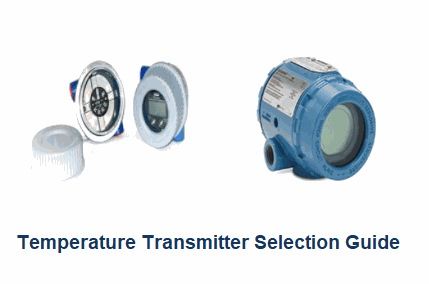Blog
Temperature Transmitter: How to Select The Efficient One for Your Application?
Temperature Transmitter: How to Select The Efficient One for Your Application?
February 23, 2021
Temperature transmitters are the devices used for temperature measurement and its display on the monitoring screen. These devices are often used for enhancing the integrity of process parameters. In industrial applications, there various types of temperature transmitters are utilized. Today, you can find various types of result-centric, cost-efficient, high-performance temperature transmitters. However, when it comes to the selection of a specific transmitter suitable for your applications, you must follow the guidelines by industry experts. This post discusses a few factors one must consider while selecting a temperature transmitter.

Factors to Consider While Selecting a Temperature Transmitter
By considering the following factors and checking their compatibility with application requirements, one can select a correct temperature transmitter to gain optimum performance efficiency.
- Type of Sensors: The smart temperature transmitters often feature either RTD or thermocouple sensors. The actual activity of temperature measurement is performed by the sensor itself, therefore, the type of temperature sensor is a prime consideration while choosing a transmitter. The factors like temperature fluctuations, moisture, corrosion, contact lead degradation, etc can impact the sensor performance, and therefore, one must go for high-quality sensors.
- Mounting Location: The mounting location is a crucial consideration while buying a temperature transmitter. If the distance between the transmitter and control panel is less and if there is no noise interruption, the installation can cost less. One should also consider if the transmitter has to be installed overhead, outdoors, or at tactical in-field locations. If the transmitter is to be installed in hazardous location then you must check if the transmitter can support remote installation and monitoring.
- Configuration Protocol: Although smart transmitters may have similar designs, they use different configuration protocols. Highway addressable remote transducer (HART) protocol and PC configuration protocols like Profibus, Foundation Fieldbus, etc are commonly preferred in the industrial transmitters. The purpose of configuration protocols is to offer remote accessibility, authentication feature, and operator control. Therefore, one must use the configuration protocol that is compatible with the existing system.
- Measurement Accuracy: Accuracy is an essential selection criterion for temperature transmitters as an error or delay in temperature measurement can lead to expensive and hazardous damage. Therefore, one must not go for low accuracy transmitters. Considering the industrial demand, the accuracy range one must look for is ±0.0025° F to 1° F. The factors like cold junction compensation, line voltage effect, EMI/RFI interruption, etc impact the accuracy, therefore, one must choose a transmitter immune to such problems.
- EMI/RFI Immunity and Signal Isolation: Electromagnetic interference and radio frequency interference can cause signal degradation, non-repeatability, lack of accuracy and efficiency, etc. Therefore, one must go for a transmitter with strong immunity against EMI/RFI.
- Diagnostic and Troubleshooting Capabilities: The smart transmitters feature several electronic part integrations, therefore, it is difficult for the operator to figure out the problem while diagnosis or troubleshooting. However, there are several smart transformers in the market that feature automatic error detection, diagnostic, and troubleshooting. Due to the automatic diagnostic abilities, the sensors are continuously monitored and circuits are tested periodically by the transmitter itself. This helps in instant error detection and resolution.
- Special Functionality: In order to get the best fit for your requirements, you can look for temperature transmitters with special functionalities. This way, one can get customized products for their applications. The special functionalities can be application-specific process parameters, sensor trimming, indicative alarms, no-standard inputs, etc.
Also, you must select the temperature transmitter supplier wisely. You must partner with experienced and trustworthy suppliers who can give you quality products and help you with the selection, too. The Transmitter Shop is one such company that provides transmitters from high-end brands like Rosemount, Foxboro, Honeywell, etc.Rosemount temperature transmitter 3144P, Foxboro temperature transmitter rrt20-rrt15 are some of the popular industrial temperature transmitters available with.
- Comparison between Multi Valve Manifolds Block Valves and Bleed Valves
- Understanding Electrochemical Detection: Principles, Techniques and Environmental Application
- How Can Greenhouse Gas Emissions Be Reduced?
- Pneumatic Pressure Controllers: A Safe Choice for Hazardous Areas
- A Practical Guide to Vacuum Measurement and Operation
- Understanding Electrochemical Detection: Principles, Techniques and Environmental Application
- How Can Greenhouse Gas Emissions Be Reduced?
- Pneumatic Pressure Controllers: A Safe Choice for Hazardous Areas
- A Practical Guide to Vacuum Measurement and Operation
- An Unconventional Guide to Selecting the Right Pressure Sensor
QUICK ENQUIRY